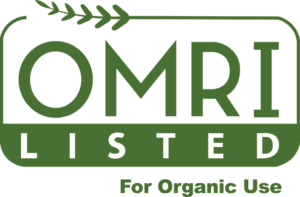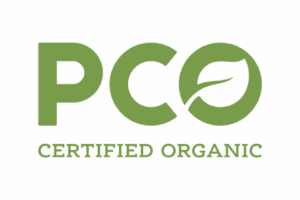Is your New Year’s resolution to fine tune your farm fertility plan? Or to make sure you order your organic pest control products pre-season, before you have an outbreak? Or maybe you’re ready to switch to a new potting mix? In all of these scenarios farmers need to carefully consider, not only the effectiveness, application rate and method, cost, and regional availability of each product, but the compatibility with CNG standards. Determining whether or not an input is approved for use is relatively straightforward for many products, but there are some common stumbling blocks. Green washing is rampant in the garden product industry and labeling can be misleading. OMRI is by far the most common organic product listing organization, but others exist as well. Some inputs are raw materials and come from non-certifiable sources. We’ll provide sourcing tips for each input type and go over some of the most common pitfalls, so that you can ensure that all your 2024 farm inputs are good to go!
OMRI & Materials Listing

While OMRI is the organic industry standard for product listing, other organizations also review products for use in organic systems. A few common alternatives include CDFA, WSDA, MOFGA, and PCO. CNG accepts products that have been listed by any of these agencies and also recognizes the materials lists of international organic programs.
Understanding organic input labels and the product listing agencies is key to ensuring a product’s acceptability in CNG production. For most inputs, farmers can go through the following steps in order to determine if an input is allowed for use in CNG operations:
- Is the product OMRI-listed?
- If yes, you’re good to go! (Note that we do not allow rotenone or synthetic hydroponic fertilizer solutions, even though they are OMRI-listed).
- If no, move onto the next step.
- Obtain the ingredient list and check that each ingredient is OMRI-listed and/or on the CNG Allowed & Prohibited Substances list.
- If each ingredient is listed, you’re all good!
- If one or more of the ingredients is not listed or on the prohibited list the product is not allowed.
- Still confused? You can always reach out to the CNG certification specialist if you need help: certification@naturallygrown.org
As you’ll notice from the above process, inputs do not always have to be OMRI-listed in order to be used in CNG production. Some products are perfectly acceptable for use, even without the OMRI label. In general, if the product is in a bottle or sold at a hardware or large feed store, only use it if it is OMRI-listed. If the product is made locally or regionally, or is a simple product with just one or a few ingredients, the OMRI label may not be necessary, but make sure to check each ingredient carefully.
Input companies go through a long, paperwork-intensive process to get their products OMRI-listed and not all companies feel the need to go through the process. Smaller potting mix manufacturers and composting facilities often forgo OMRI listing and, instead, provide their full ingredient lists readily to certified farmers and certifiers.
Restricted inputs
In addition to the straightforward “approved” and “prohibited” inputs, many inputs are approved, but “restricted.” This means that the product can be used, but growers must meet certain conditions before use. Products can be restricted for all kinds of reasons, but are usually based in reducing environmental impact and preventing the over-application of inputs. Examples of restricted inputs include most organic pesticides and fungicides, high salt fertilizers, and chelated micronutrients.
- Organic pesticides like Safer Insecticidal Soap can only be used in tandem with cultural and mechanical practices (like insect exclusion netting or trap cropping).
- High salt fertilizers like Chilean nitrate can be used only if the farmer has a reasonable strategy for preventing runoff and leaching.
- Chelated synthetic micronutrients like Biomin Boron can be used only if a recent soil or foliar test indicates a boron deficiency.
The following diagram is a screen shot of the OMRI website search page, decoded.
 Understanding the restrictions on certain products is key to remaining in compliance with CNG standards and using inputs responsibly and cost-effectively. Please reach out to CNG if you need help determining if an input is allowed for use.
Understanding the restrictions on certain products is key to remaining in compliance with CNG standards and using inputs responsibly and cost-effectively. Please reach out to CNG if you need help determining if an input is allowed for use.
Fertilizers
Sourcing approved fertilizers can be especially tricky because there are so many different kinds and sources, from simple, one-ingredient alfalfa meal to complex blends of macro and micronutrients.
Blends and Liquid Formulations
The best place to start for fertilizer blends and liquid fertilizers is on the OMRI website. However, there is a big caveat here— because the NOP allows hydroponic operations and CNG does not, the NOP allows some synthetic hydroponic fertilizers.
CNG does not allow the use of synthetic hydroponic fertilizers, even if they are OMRI-listed.
If you see ingredients like sodium nitrate on an OMRI-listed liquid fertilizer, chances are it’s not allowed for use in CNG production. Contact the certification specialist if you have questions, we’re happy to help!
For most liquid and blended fertility products, however, the OMRI list and or label will be super helpful. If you’re not able to find the product on the OMRI-list, check the company’s website for any product certification information or for alternative organic labels. If all else fails, you’ll need to contact the company directly for a full ingredient list. Many companies are unresponsive to ingredient list requests from customers or even certifiers. It is our experience companies who are stingy about providing product ingredients, usually do not sell approved products anyways. For this reason, it’s much more straightforward to purchase fertilizer formulations that are OMRI listed or approved by another organic product listing agency (WSDA, CDFA, etc.)
Raw Inputs and Single Ingredient Fertilizers
Many of the fertility inputs that CNG farmers use are raw materials like manure, hay, wood chips, or leaves. Others are single ingredient inputs such as elemental sulfur, alfalfa meal, dolomitic lime, blood meal, peat moss, etc. Many of these types of inputs are not specific products manufactured and patented by one company, so the OMRI list is less useful. With these types of inputs, start with the CNG list of Allowed and Prohibited Inputs.
Once you’ve found the fertilizer on the list, there are a few other details to confirm before considering the product acceptable for use in CNG.
- Does the product contain any synthetic additives or stabilizers? Peat moss can sometimes contain a synthetic wetting agent and some forms of lime are chemically processed. The product should be pure and 100% one ingredient, unless the other ingredients are also naturally derived and approved.
- Is the product derived from a common GMO crop? Examples include cottonseed meal, soybean meal, alfalfa meal, alfalfa hay, and molasses. Ensure that the product you purchase was not produced with GMO crops (either contact the supplier or purchase from a certified organic source).
- For mineral products, was the product synthetically derived or mined? Certain minerals like potassium sulfate are only allowed if they are mined, rather than synthetically manufactured.
- Does the product have an application window? Raw manure may only be applied according to the 90/120 rule, while processed, heat-treated manure (often sold as pelletized manure) can be applied without restriction. For more information about manure and compost, please see our factsheet, Compost, Manure, and the In-between.
Pest & Disease Control Products
Like liquid fertilizers, pesticides, fungicides, and herbicides should, in general, have the OMRI label if they are to be used on a CNG farm. Confusion is common with these products because labeling language can be misleading. A few pest control products like 100% neem oil may contain just one approved substance, but most are formulations with an active ingredient and additional inactive ingredients. Usually only the active ingredient is listed on the label and companies are reticent to provide full ingredient lists.
Many garden product companies, like Bonide and Fox Farm, make products that have the same active ingredient as OMRI-listed products, but are listed for organic gardening and do not go through the OMRI verification process.
Sometimes the rest of the ingredients in these products are fine, but other times they contain petroleum products or other synthetic materials. To confuse matters further, some of these companies sell both organic and conventional products, with very similar product design and marketing language. Be sure you look for an OMRI label or obtain a full list of ingredients from the manufacturer before using a pest or disease control product.
Potting Mix
Many farmers purchase potting mix from large suppliers like ProMix, but potting mix is also often sourced from smaller local and regional companies. Looking for an OMRI label is usually the best way to ensure that potting mix is approved, but if the mix is made by a smaller company, getting an ingredient list may be a better option. Either way, keep the following in mind:
- Look out for wetting agents! Almost all peat-based potting mixes contain a synthetic wetting agent to help the peat from becoming hydrophobic. If the label says “wetting agent” assume that it is a synthetic wetting agent. On an organic potting mix label the ingredients will say “organic wetting agent” or yucca.
- Sometimes potting mix bags will say “contains” instead of “ingredients” and list a few constituents like peat, perlite, and compost. Folks commonly confuse the “contains” list with the ingredient list. An ingredient list must include every ingredient in the product, while “contains” usually just indicates the main components. So, make sure you obtain the actual ingredient list.
- Large companies (ProMix, SunGro etc.) often make mostly conventional potting mix, and supply just a few OMRI-listed mixes. Make sure you are, in fact, purchasing the OMRI-listed versions (they will be more expensive).
We’re here to help!
Still struggling with input sourcing? Send us a message!






